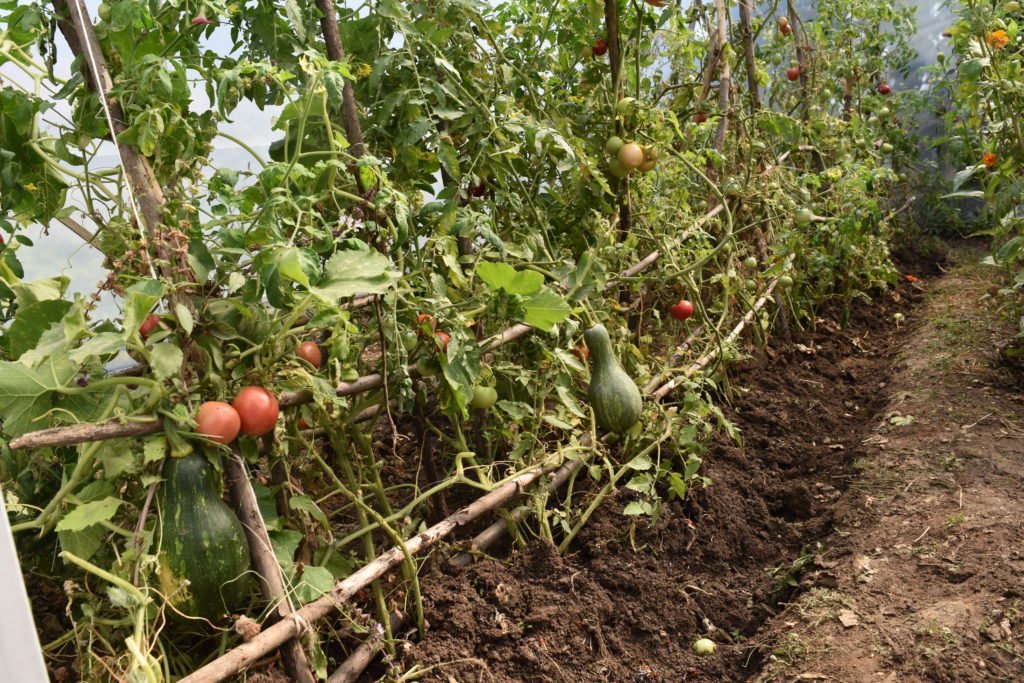Teams from Armenia Tree Project (ATP) and GreenLane NGO arrived in Stepanakert on September 26 and were pleasantly surprised to see the city so active, particularly after the panic in Armenia over recent attacks on its sovereign territory. The streets of Stepanakert were bustling with people rushing to work, joyful schoolchildren and small businesses changing their open-close signs.
Our team was recharged with this positive energy as they made their first stop at the Shushi Technological University’s greenhouse. The university relocated to Stepanakert during the 2020 war. We met students and lecturers from the faculty of agronomy, accompanied by the chancellor.
Our partner Green Lane NGO introduced new varieties of high-value crops, such as strawberry, goji berry, blueberry, as well as greens, herbs and flowers, which are easily grown not only in the greenhouse but also in an open field. Some of the greens and herbs provided include oregano, lemon balm, sage, asparagus, rosemary, chives, stevia, as well as different varieties of mints: English, apple and chocolate. The beneficiaries were provided with tools including thermometers, watering cans, fertilizers, educational materials and guidebooks.
They were also introduced to the medicinal value of some of the plants. Moreover, herbs such as basil, thyme and rosemary can be grown earlier and later in the year in the greenhouse, and there is a consistent demand for it. They can also be kept in the greenhouse as mother plants and then propagated in late winter to sell as container plants.
The team then traveled to the villages of Herher, Karmir Shuka and Taghavard in the heroic region of Martuni and the vocational school named after Vladik Khachatran. In the schoolyard, in addition to the small greenhouse provided by ATP, the school had undertaken assembling another greenhouse. In an interview with Artak Sargsyan, the director of the vocational school, we learned that for the past two years they have been fully immersed in renovating the school, because several buildings were severely damaged during the war.
“These greenhouses are a new addition to our school. I always tell people that we can’t change our lifestyle without having it change us in some way. I want this greenhouse to not only serve as a demonstrative site for students and specialists in the field, but also to develop into an efficient operation that will optimize plant growth and expedite harvesting and sales,” said Sargsyan. “On this note, I think growing high-yield cut flowers will be the best choice; they are in high demand, and we will significantly reduce the volumes which are imported from other countries,” he continued. For greenhouse operations, Sargsyan added that the school has hired an agronomist who will frequently tend to the plants
In Herher, Karmir Shuka and Taghavard Villages of Martuni Region, we met our beneficiaries who shared their previous experiences in growing vegetables and asked us for clear instructions on how to deal with each type of plant we have provided to them. Many of the families had achieved good results by harvesting several times since midsummer, while others had loosened the soil in the greenhouse and were waiting for further instructions and guidance to plant for the first time. In Herher, backyard nursery owner Armine Baghisyan showed off her greenhouse full of vegetables and her jars of pickled cucumbers and tomatoes. Baghisyan’s husband died during the 2020 war after serving in the army for over 25 years. After retirement, he only managed to work as the village administrator for a year. When the war broke again, like many men in the village, he voluntarily joined the troops to defend the borders of Machkalashen Village, located not far from Herher. Baghsiyan lives with her mother-in law, her grandmother Anzhela, her daughter and her son Levon, who has chosen to follow in his father’s footsteps and serves in the armed forces.

Our last stop was in the Askeran Region, where we met with the deputy of regional administration Karen Aghajanyan. We visited the backyard greenhouse families in Khramort and Khnapat Villages. In both villages, the situation is precarious, since the adversary still holds control over some strategic heights nearby the villages. Despite this, many of the residents continue to send their children to school and kindergarten. Our delegation was awestruck to witness the strong will of the heroic inhabitants of Khramort who were helping their fellow villagers renovate the roof of their house located only a few kilometers away from Azerbaijan.
We were inspired by the resilience of the people of Artsakh. Despite the instability in the region, there is a sense of calm in the villages and a determination in the people to live productive lives. Our beneficiaries’ hard work over the past months is evident in their eagerness to continue to produce crops to feed their families and earn income.


Be the first to comment